
If Miss Cobia doesn’t agree to fill your dance card, there are still plenty of candidates for a watery Lowcountry tango – because all the fish bite in June.
An old proverb tells us “There are plenty of other fish in the sea,” but you couldn’t prove it by Lowcountry anglers’ actions in May and June. That wise adage refers, of course, to the dating trials and tribulations of young lovers jilted by girl or boyfriends, but the same advice could be directed at Lowcountry fishermen.
It seems everyone is cruising around, looking or soaking their best baits, hoping to hook up with the belle of the ball, Miss Cobia. But fear not, if you find yourself alone and forsaken, all is not lost. There are lots of other fish in the sea — and they are all biting in June.
The Broad River and springtime cobia are so intertwined that fishermen rarely reference one without mentioning the other. Probably more anglers target and catch more cobia here than anywhere else in the world during the short window of fast action. And yes, solid cobia action also exists in the Coosaw River and St. Helena Sound, but cobia are far from the only hot fishing venue this month.
Redfish are a year-round target in the Lowcountry, really the only inshore fish caught during the coldest months. Now that the water has warmed and bait has returned to the low-tide flats, they are feeding aggressively on mullet, crabs, shrimp and mud minnows. The big difference in June, as well as the rest of the way through the warm season, is that during the high-tide stages, spot-tails spread out chasing fiddler crabs and other small baits into the smooth cord grass (spartina alterniflora) of the hard-bottomed marshes where anglers can walk without sinking up to their knees in pluff mud. This warm-season venue for redfishing gives boatless, wading anglers, wielding fly rods or light spinning rods, an opportunity to catch hard-fighting redfish.
Most anglers will still choose to fish from a boat. After all, they paid good money for their craft and frankly, you can get to more fish-holding water than on foot, including some hard-bottom, wading flats not accessible by road.
Capt. Tuck Scott, who guides out of the Bay Street Outfitters in Beaufort said, “The schools are still on the low-tide flats but more loosely congregated.” He likes targeting points, mud flats and oysters for his clients who use spinning tackle with plain gold spoons, skirted spoons like the Red Ripper and spinnerbaits like the Redfish Magic.
Not many people around the Lowcountry throw them, but topwater plugs and bass buzzbaits can elicit some amazing strikes along grass lines in the warmer weather. Redfish are definitely aggressive in June.
Some of the best spots for redfish are in the Broad River, close to where cobia fishermen congregate. Try low-tide flats around Hazards Creek.
The cold weather this past winter may have reduced the number of speckled trout in our waters, but Capt. Doug Gertis, one of the most-experienced and knowledgeable fishermen in the Beaufort area, said that few probably died directly from the cold itself, but rather from rampaging dolphins that took advantage of the fishes’reduced mobility in the cold water. Nonetheless, lots of trout will still be around, and June is a time when you can catch some seriously large specimens.
Unlike late fall when schools of trout cruise the shallows, June water temperatures are too warm. Trout, especially larger ones, prefer deeper water and are best targeted at half-tide and rising. Gertis said that fish generally relate to structure such as bridge pilings, rocks and fallen trees in June, and they also forage along shell banks that reach out from points, especially creek mouths.
At creek mouths, Gertis looks for clean water — not clear like in winter, but also not silted up with mud and sand — and a flow that exhibits a long current line on either side of a shell bank. He fishes these spots on a rising tide as the water pushes back into the creek. Positioning his boat upcurrent, he floats a corked bait along and just outside either side of the current line.
Gertis recommends popping corks in bright colors such as pink, fluorescent orange or yellow, because trout are attracted to the rattle and bright color. He likes 3- to 5-inch finger mullet or the biggest mud minnows he can find to string onto a 3/0 Kahle hook.
For presentations around deeper structures such as bridge pilings and flooded timber — where most trout will hold very near or on the bottom — Gertis goes with a slip float and long leader or a Carolina rig and quarter-ounce weight with the same bait preferences.
The wonderful thing about trout during cobia season is that they bite better in lousy weather. When the breeze is up and cloud cover makes cobia-fishing difficult, trout are going to be their most active. Gertis suggests Archers Creek, Ballast Creek and Battery Creek as good areas in Port Royal Sound, none very far from the most popular cobia holes in the Broad River.
Another interesting option Gertis suggested is night-fishing for trout. Find a lighted bridge or dock or bring along a lantern of your own and then back off a short cast away. The light will attract all kinds of bait, and soon, some gamefish, too. Throw a minnow into the mix on a bare hook with a split shot a foot up the line for some wild action.
Besides trout and redfish, many anglers fall into the “fun fish” or “food fish” categories — and they are often opposites. On one hand, they target fish that are virtually inedible, but fun to catch. Ladyfish — the poor man’s tiny tarpon) — are a favorite fun fish that show up in shallows around points and oyster banks. These long, skinny fish strike at most any artificial lure or fly with abandon, often missing the hook point, but when hooked, they put on an aerial show reminiscent of tarpon in the Florida Keys, leaping skyward, shaking their head and body violently the instant they feel the jab of cold steel and often throwing the hook before they land back into the water. They are fun, but don’t keep them unless you need crab bait.
At the other end of the pole are fishermen who target bottomfish by soaking small chunks of fresh shrimp on small hooks. On any given weekend, near Trenchards Inlet and other similar venues, a half-dozen or more small boats, jammed with friends, will be targeting whiting.
Ralph Davis, an veteran fishermen who grew up in Lowcountry waters, said that back when more people depended on fish as a major portion of their diet, dozens of boats rather than just a few would crowd any of the good whiting spots. Whiting was his grandmother’s favorite eating fish, so Davis and his father often delivered her a mess of fresh caught “whiting” filets, though he admits they sometimes fibbed about the variety. The standard fishing method back then was hand lines with two small hooks above a lead sinker and cut-up shrimp bait, though now most people use light spinning rods. Davis likes fishing the slower moving water an hour on either side of both tides.
If you really get frustrated that all the fish in the sea seem to be avoiding you, sharks can always be targeted, and catching them is relatively simple. Chop off a chunk of mullet or the wing of a skate, thread it onto a big circle hook, and throw it into the water. The size of the sharks is mostly related to the depth of the water you’re fishing. Bonnethead and sharpnose sharks, two species legal to keep and tasty to eat, roam at this time of year. Put the rod in a rod holder, sit back, relax and let the bait and circle hook do the job. A shark will eventually find it, eat it and turn away. The line will come tight as the swallowed bait slides back out of the shark’s throat and the circle hook lodges in its usual place in the corner of the shark’s mouth. When the rod starts bouncing around, simply pull it from the rod holder and hold on. Don’t yank back for a hookset with circle hooks, as such actions frequently results in missed fish.
Despite signs at many boat ramps advising against consuming sharks because of mercury contamination, according to Bryan Frazier, a biologist for the S.C. Department of Natural Resources’ Marine Division, the restriction is far too broadly applied. Higher concentrations of mercury are normally only found in longer-lived and larger members of the shark family generally found offshore.
There is literally something for everyone in June in the Beaufort/Hilton Head area. The belle of the ball will charm lots of folks, for sure, but there are less glamorous prizes there for the rest of us.


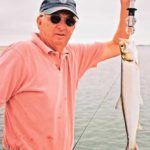
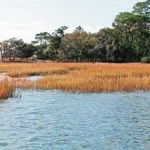
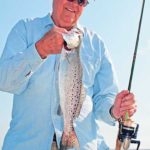
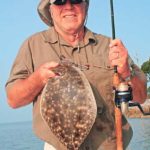
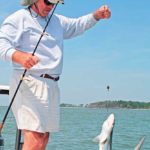
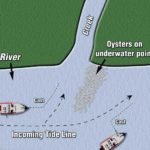


Be the first to comment